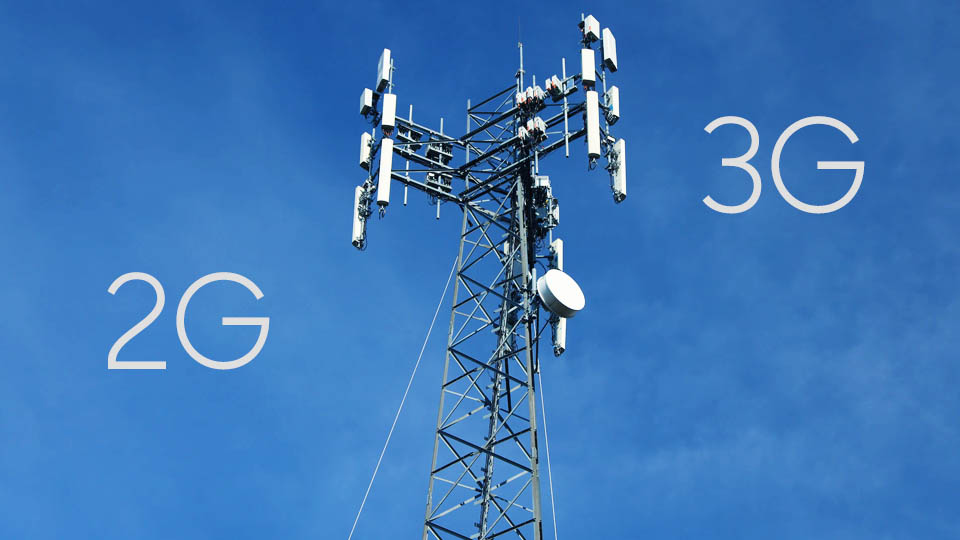
Do you still utilize those phones made in the 2000s to facilitate internet surfing and calls? While it’s great that your maintenance culture is top-notch, those mobiles will soon be forced into retirement.
Various mobile networks around the globe are starting to shut down support for 2G and 3G networks. The key reason for this is that these older networks have become obsolete. The infrastructure required to keep 2G and 3G running is expensive to maintain.
Also, the world has gone on to implement swifter and more cost-efficient networks like 4G and 5G. The number of mobile phone subscriptions surpassed 8.5 billion for the first time in 2021. This means that mobile networks have increased demand for improved internet connection speeds.
As a result, most of them have progressively shifted from 2G and 3G networks. Nevertheless, in some regions, the shift to 4G and 5G is happening relatively faster.
In these areas, since mobile networks are pulling out support for 2G and 3G, older devices like 2G-enabled phones, smartwatches, and even automated vehicles will have to upgrade. If they don’t, they’ll most likely become obsolete to the user.
What the shift means for older mobile phones
It simply means that older mobile phones configured to work only on 2G and 3G networks will be unable to connect to cellular data. This includes devices like iPads, wearables, computers, and Kindles.
Any device that cannot connect to 4G, LTE, and 5G networks will be phased out and negatively affected by the mobile network shift. These phones will be restricted to an internet connection when there’s a Wi-Fi network nearby. Nevertheless, the Wi-Fi connectivity on these devices would remain functional unless faulty.
Reasons Telecommunication Companies are Phasing out Older Networks
There are different reasons why telecommunication firms are phasing out 2G and 3G networks. The primary reasons include its high cost of maintenance, increased efficiency, and outmodedness.
The fact is that these 2G and 3G networks have been in use for more than two decades. They’re no longer in production. Mobile networks have been evaluated and determined that newer networks will require less maintenance. This leads to increased wear and tear of the machines.
Also, 4G, LTE, and 5G networks are less expensive to run than 2G and 3G. These new networks can take an increased number of users in one standard and don’t require as much maintenance. Mobile carriers are also shifting to 4G and 5G to facilitate an easier shift to 6G, which is estimated to be available by 2030.
This isn’t the first time mobile carriers have shifted from obsolete networks. Years back, rotary phones had to be phased out because of the introduction of newer networks.
In the United Arab Emirates (UAE), users have begun to stop using their older phones since its telecommunications regulatory authority practically sounded the end of older networks like 2G by stopping their sales in June 2022.
Mobile phone producers can select the network types they want to implement on their devices. Currently, many are progressivly phasing out older networks to make way for faster services to satisfy customers and meet the stipulations of regulatory agencies.
How countries are shutting down 2G and 3G
While it is doubtful that 2G and 3G networks will be shut down at a go, they’re progressively being phased out, as has been observed in 2022. Nevertheless, the trend has shown that 2G and 3G networks will not be supported indefinitely.
Mobile carriers across the globe have broadcasted their shutdown schedules for these older networks. In the US, mobile users are encouraged to plan to get newer devices. The 2G and 3G shutdowns could prevent older phone users from calling emergency services like 911.
Different mobile networks have announced plans to shut down 3G. Verizon announced that 3G would be phased out by December 31, 2022. T-Mobile has phased out Sprint’s CDMA network in March and the 4G LTE network in June 2022.
India is a country with more than 1 billion mobile phone users. Due to the shift of a majority of its consumers to 4G, telecommunication firms have started phasing out 3G in the country. Only 8% of Indian mobile phone users are still on 2G and 3G networks. The bulk of the remaining 90% is almost equally divided between 4G and LTE.
Airtel began to phase out 3G in areas like Kolkata in 2021. Vodafone has announced that 3G services will be entirely phased out in the country by the end of 2022.
In the Philippines, Globe Telecom has been offering only 4G/LTE and 5G SIMs since 2020. The company said the move prompted users to switch to 4G/LTE networks faster.
Similarly, mobile carriers in countries like the UK and China have also begun to phase out 2G and 3G networks.
Knowing if your device is 2G/3G
If you want to make a change from a 2G or 3G-enabled device but you aren’t sure, you can check in a variety of ways. You can check your phone manual if you still have it.
Since it is unlikely that mobile phone subscribers who have used their phones for so long will still have access to their manuals, you can leverage the internet. Go on the internet and search if your device is 2G or 3G-enabled.
The third option is to check with your mobile carrier on their website or email to know how they intend to retire 2G and 3G in your region.
You need to understand that this 2G and 3G shutdown won’t affect only phones. Any device, including Tesla vehicles, smart watches, and products that utilize the internet, could become obsolete. There’s also a chance that devices with a 2G or 3G backup for poor 4G internet connection could be negatively impacted.
Different mobile carriers have begun to shut down 2G and 3G networks across several countries on the globe. Because of this, mobile devices on older networks will become obsolete.
There are different reasons for this shift by telecommunication companies to 4G/LTE and 5G. 2G and 3G infrastructure are costly to maintain, less efficient, and outdated. Telecom firms also want to make the shift to 6G easier.
Countries like the UAE, China, the UK, the US, and India are starting to shut down older networks. To ensure your device won’t be affected, you need to check your mobile carrier’s website for the devices that’ll not be supported after phasing out of older networks.
 Lenovo Z6 Pro
Lenovo Z6 Pro  Honor 400 Pro
Honor 400 Pro  Samsung Galaxy Note 20 Ultra 5G
Samsung Galaxy Note 20 Ultra 5G  Blu Star 4.5
Blu Star 4.5  Alcatel Fierce 2
Alcatel Fierce 2 Motorola Moto G54
Motorola Moto G54 

